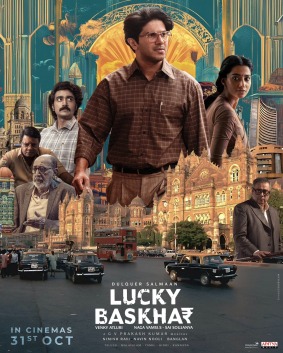| S.No | State | District | No.of Blocks | No. of Panchayats | No. of Villages | FULL JANKARI |
| 1 | ANDAMAN AND NICOBAR | NICOBARS | 3 | 10 | 62 | NICOBARS Full Jankari |
| 2 | NORTH AND MIDDLE ANDAMAN | 3 | 37 | 115 | NORTH AND MIDDLE ANDAMAN Full Jankari | |
| 3 | SOUTH ANDAMAN | 3 | 30 | 74 | SOUTH ANDAMAN Full Jankari | |
| Total | 9 | 77 | 251 |
ANDAMAN AND NICOBAR State
ANDAMAN AND NICOBAR District
ANDAMAN AND NICOBAR No.of Blocks
ANDAMAN AND NICOBAR No. of Panchayats
ANDAMAN AND NICOBAR No. of Villages
ANDAMAN AND NICOBAR FULL HISTORY JANKARI
The Andaman and Nicobar Islands, a beautiful archipelago in the Bay of Bengal, boast a fascinating history filled with indigenous communities, colonial influences, and eventual independence with India. Here’s a glimpse into their past:
Early Inhabitants:
- The Andaman and Nicobar Islands were inhabited by various indigenous tribes for millennia. The Andamanese tribes in the north and the Nicobarese tribes in the south developed unique languages, cultures, and ways of life living in harmony with the islands’ ecosystem.
Colonial Era (18th – 19th Centuries):
- Danish and British Rule: The Danes first arrived in the Nicobar Islands in the mid-18th century, establishing a brief colony. The British took control of the Andamans in 1858 and later acquired the Nicobars from the Danes in 1868.
- Cellular Jail: The British established a penal settlement in Port Blair in 1857, notorious for the Cellular Jail built in 1896, which housed Indian independence activists.
20th Century and Beyond:
- World War II: The islands were briefly occupied by Japan during World War II.
- Independence and India: After India’s independence in 1947, the Andaman and Nicobar Islands became a province and later a Union Territory of India in 1950.
- 2004 Tsunami: The islands were devastated by the 2004 Indian Ocean tsunami, causing significant loss of life and infrastructure damage.
The Islands Today:
- The Andaman and Nicobar Islands are a popular tourist destination known for their pristine beaches, coral reefs, rainforests, and tribal heritage. The Indian government is actively developing the islands while focusing on preserving their ecological balance and indigenous communities.
Want to Know More?
Here are some resources for further exploration:
ANDAMAN AND NICOBAR FULL HISTORY JANKARI
## Andaman and Nicobar Islands: A Journey Through History
The Andaman and Nicobar Islands, nestled in the Bay of Bengal, boast a rich and complex history spanning thousands of years. Here’s a glimpse into their fascinating past:
**Early Inhabitants and Pre-colonial Era:**
* **Indigenous Tribes:** The islands have been home to indigenous tribes for millennia, including the Great Andamanese, Jarawas, Onge, and Sentinelese in the Andamans, and the Nicobarese and Shompen in the Nicobars. These tribes lived a hunter-gatherer lifestyle and developed unique cultures and languages.
* **Chola Empire:** The Chola Empire, a powerful South Indian dynasty, used the islands as a strategic naval base in the 11th century.
* **Maratha Empire:** The Marathas also established a temporary presence on the islands in the 17th century.
**Colonial Period:**
* **Danish East India Company:** The Danish East India Company attempted to colonize the Nicobar Islands in the 18th century but faced resistance from the native population and eventually abandoned their efforts.
* **British Rule:** The British established a penal colony on the Andaman Islands in 1789, primarily to house convicts from India. This period saw the construction of the infamous Cellular Jail, a symbol of colonial oppression. The British also introduced plantations and brought in laborers from mainland India, leading to demographic changes.
* **Japanese Occupation:** During World War II, the islands were briefly occupied by the Japanese from 1942 to 1945. This period witnessed atrocities against the local population and Allied prisoners of war.
**Post-Independence:**
* **Indian Territory:** After India gained independence in 1947, the Andaman and Nicobar Islands became a Union Territory. The Indian government focused on developing infrastructure, promoting tourism, and protecting the rights of indigenous tribes.
* **Tsunami Devastation:** The 2004 Indian Ocean tsunami caused significant damage to the islands, claiming thousands of lives and displacing many communities.
**Contemporary Issues:**
* **Tribal Rights:** Protecting the rights and cultural identity of indigenous tribes remains a critical concern. The government has implemented policies to restrict access to tribal areas and promote their self-determination.
* **Environmental Protection:** Balancing development with environmental conservation is crucial for the islands’ fragile ecosystems. Sustainable tourism and responsible resource management are essential.
The Andaman and Nicobar Islands continue to evolve, with their history shaping their present and influencing their future. Understanding their past is vital to appreciate the islands’ unique cultural heritage and navigate the challenges they face today.



